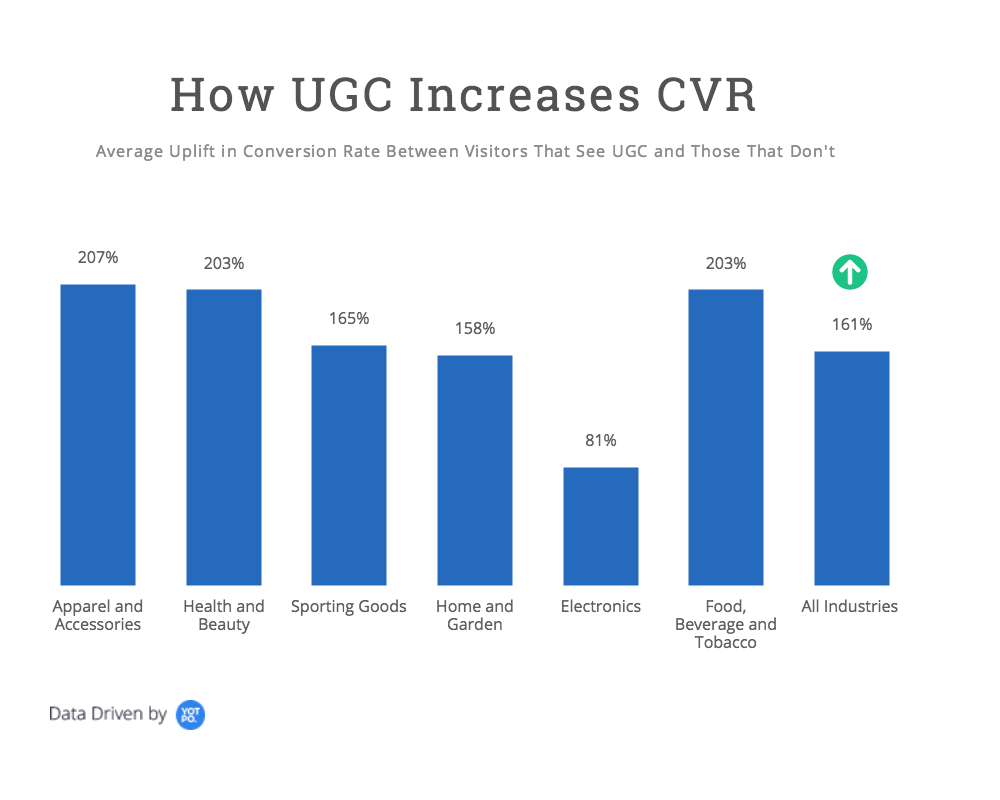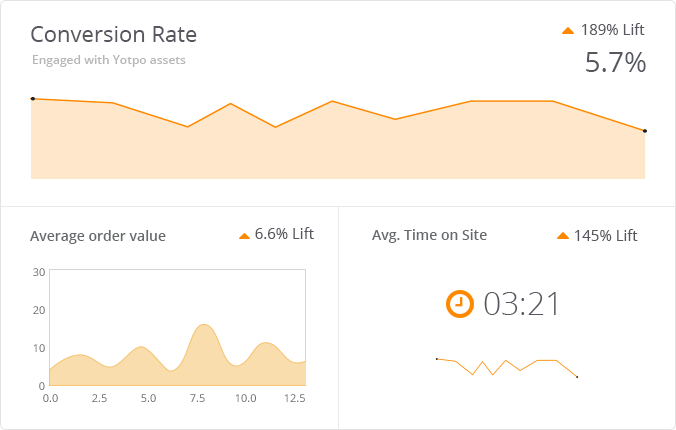We all know the importance of using data in content marketing, but just saying “use data” is broad.
Which metrics actually matter to B2C and eCommerce marketers for forming and optimizing a data driven content marketing strategy?
The most impactful insights come from your customers: Reviews, photos, Q&A, social media interactions and other direct feedback.
Until now, it’s been difficult to actually apply data to get actionable takeaways from customer content, but with advances in data science, there’s now exciting ways to delve deeper into what your customers are saying.
What is a data-driven user-generated content marketing strategy, and why does it matter? Read on to find out…
Why is UGC so important?
Online shoppers can’t physically touch the items they are browsing through, so they turn to product reviews, customer photos, and other forms of user-generated content to inform their purchase decisions.
What Happens When Data & UGC Collide
The data tells us 3 things about UGC:
1) Shoppers want UGC.
There are plenty of stats out there on how many customers say they read reviews, but this data is self-reported and often collected in surveys.
To get an accurate understanding of the real impact of UGC, we analyzed how many visitors to more than 200,000 eCommerce stores were actively engaging with customer reviews, star ratings, and customer photos.
The findings?
In some industries such as electronics, more than 40% of site visitors engage with UGC.
And this is just website visitors — when you look at the shoppers that end up buying, the numbers are even more staggering.
On average, 55% of customers engage with UGC before making a purchase.
So, many people who visit your site will engage with UGC, but the ones who end up purchasing almost certainly have.
2) UGC is worth too much to ignore.
You can see in the graph below that shoppers across industries are about twice as likely to buy when they see UGC.
The average uplift in eCommerce conversion rate from adding user-generated content to your site is 161%.
The apparel and accessories industry has the highest impact with 207%, and the electronics industry has the lowest impact with 81% — still nearly double the conversion rate!
3) UGC’s value is undeniable, but you need data to make the most of it.
There are many ways to leverage UGC in marketing, like including customer reviews in social ads.
And smart brands understand that it is no longer enough to only collect customer reviews or to hope that your customers will tag you on Instagram when they take a photo with your product.
This is where data-driven user-generated content marketing comes in.
Here’s a look at how big data, machine learning, and natural language processing are changing the way we drive value from customer content.
Big data insights to optimize results
The data shows that consumers seek out user-generated content like reviews, photos and Q&A as part of their online shopping experience.
But it is a challenge for eCommerce businesses to see exactly which UGC features their customers are getting the most use out of, and which ones are bringing them the most value.
Businesses are now easily able to see which types of user-generated content are increasing sales and traffic, and where they can optimize to increase conversion.
Machine learning to optimize customer content collection
Consumers are inundated with brand messaging — and as we know, they are drowning out most calls for their attention.
A big part of any user-generated content marketing strategy is actually getting the content in the first place, and the most common way stores ask customers for reviews or photos is through a post-purchase email.
That means you need to be smart and tactful about how and when you request customer content.
By analyzing 4.5 million post-purchase emails, we found that across all industries the most reviews are written on Saturdays at 8am, and the fewest are written on Thursdays at 3pm.
[bolder]There is a 143% difference in response rate between the best and worst times!
With this knowledge, machine-learning algorithms can automatically optimize stores’ post-purchase requests to ensure that brands are making the most of their “ask.”
[Tweet “How you ask for content is just as important as when you ask.”]
Machine-learning algorithms can also pick the perfect wording for your request so that customers are even more likely to open your email.
To demonstrate how much of a difference small variations can make, we studied how changes to the subject line of post-purchase emails affect customer response.
After all, the subject line is the first thing a customer sees, and in an overcrowded inbox, tiny changes make all the difference.
We looked at the most common subject line formulas and then isolated frequently used variables, such as:
- Phrasing a request as a question or including the store name:
“Did you like your recent purchase from [store name]?”
- Offering coupons or discounts:
“Get 10% off your next purchase”
- Using an uppercase word, exclamation point, or appealing to customers’ emotions: “We hope you LOVED your purchase!”
In this short video, take a look at how different subject lines affect response rates depending on your store’s industry:
Natural language processing for smarter sentiment insight
As businesses increase their efforts to maximize user-generated content collection, they often get too many customer reviews to manage manually and need a reliable way to automate review management.
It’s great that customers are so actively communicating with brands and leaving feedback, but the sheer volume of UGC created on a daily basis can be overwhelming.
Customers love to share their experiences. Long, detailed reviews are super valuable for shoppers trying to decide whether or not to purchase, and can be highly profitable for brands.
Natural language processing helps businesses get the most important data out of their reviews.
For example, a five-star review may contain important requests for improved delivery time, while a one-star review mistakenly written off as a “negative review” may contain plenty of helpful details that can incite customers to buy.
Sentiment analysis notices these discrepancies so that you can get the most value out of your customer content.
Reviews are often mixed – it’s rare that a customer experience is wholly positive or entirely negative, and reviews reflect that. Many reviews are long and have a few sentences that express varying feelings about a given product.
This makes it difficult for the store owner to manage customer opinions, and it also makes it difficult for a potential customer to make an informed purchse decision.
Sentiment detection allows you to understand the most important takeaways from reviews by extracting key phrases from the text and clustering them by topic.
Let’s say one customer leaves a review about delivery time and another customer leaves a review about shipping time.
Natural language processing recognizes that these reviews are about the same topic and groups them together. An older analytics method would not make that connection.
Conclusion
The tides are changing. Data-driven content marketing is the future, and we’re giving you the tools you need to stay ahead of the competition.
Yotpo is focusing on cutting-edge research and innovation that gives businesses the power to collect and use UGC in marketing as well as measure the results and adjust campaigns to specific objectives.















